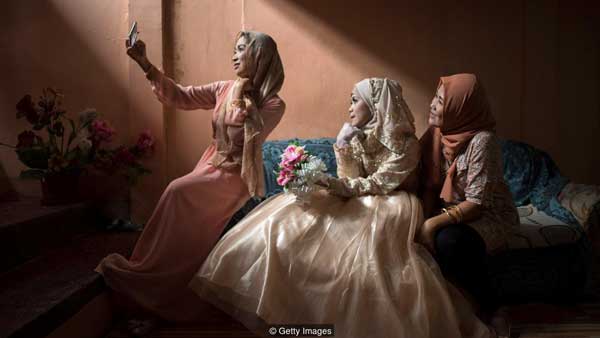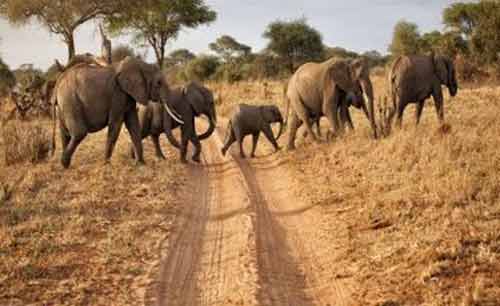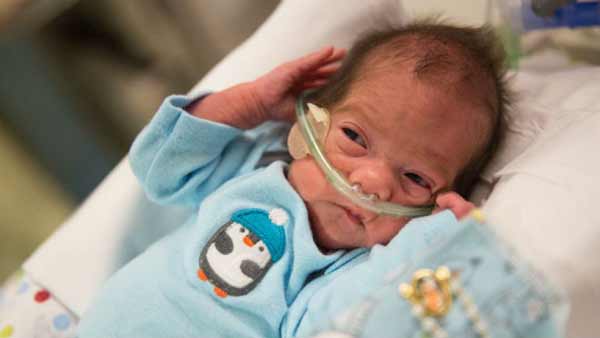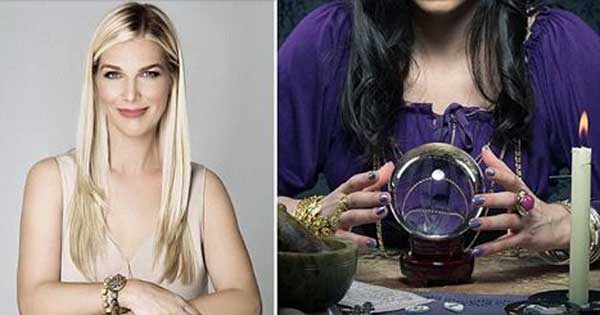 Colorado, US (BBN)- The word ‘selfie’ may bring to mind an adolescent girl making duck faces at an iPhone, seemingly oblivious to her surroundings, or a daredevil hanging off a skyscraper moments from death – symptoms of a self-obsessed culture and, some argue, the decline of society – but selfies have much deeper cultural implications that complicate those stereotype.
Colorado, US (BBN)- The word ‘selfie’ may bring to mind an adolescent girl making duck faces at an iPhone, seemingly oblivious to her surroundings, or a daredevil hanging off a skyscraper moments from death – symptoms of a self-obsessed culture and, some argue, the decline of society – but selfies have much deeper cultural implications that complicate those stereotype.
In her new book, The Selfie Generation, author Alicia Eler breaks with clichés to imagine the selfie as a double-edged sword, at once an empowering and vulnerable phenomenon, characteristic of the digital age, reports BBC.
In opposition to the assumption that selfies are objectifying or narcissistic, selfies have been key for empowering marginalized groups like women, people of color (POC), the LGBTQ community, migrants and refugees. Mass media at our fingertips created access to all kinds of characters, a new generation of individuals who aren’t as afraid to be different or unique, ultimately creating a mirror, says Eler. “Was there ever a time when adolescents weren’t obsessed with their own image?” she asks. Young or old, you can’t blame people for wanting validation, and now it’s just a swipe and a tap away.
Back in 2013, Eler wrote a piece for Hyper allergic titled The Feminist Politics of #Selfies, focusing on POC women and selfies, in response to an article posted on the women’s blog Jezebel that suggested selfies are a cry for help, among a plethora of negative slanting media coverage.
“Actually can we talk about what #selfies mean to people who never get a chance to see themselves in mainstream media?” wrote feminist comic book author Mikki Kendall on her Twitter account in November of that year.
While posting selfies publicly inherently exposes the person to trolling and hate speech, it also connects them with a global network of potential support. With the rise of the selfie, images of marginalized ‘others that were once kept out of the mainstream have become iconic.
Since 2013, when ‘selfie’ was Oxford Dictionaries’ word of the year, these contemporary self-portraits have become ubiquitous in an age when visibility can be synonymous with political power. Resistance and protest movements have taken on new forms since then.
They’re less about marching with banners or community organizing and more about decentralized fluidity or being seen across multiple online platforms.
“They are aimed at gaining visibility through a different logic – by using common images, tactics, hashtags, identity politics and iconic events,” writes author Irmgard Emmelhainz for e-flux.
THE FLIP SIDE
Of course, there’s a drawback that has become all too apparent in recent years: surveillance. Despite revelations of spying by the NSA on ordinary American citizens, or the fact that our personal information is mined and sold by large social media corporations, we seem undeterred from posting our most personal moments for all to see.
We love to selfie, even if our own images are monetized for the profit of others, our every online action is monitored, and our movements tracked by the very tools that connect us.
“The threat is not a digital one so much as it is a personal one,” writes Eler. There is a pervasive attitude of ‘I have nothing to hide,’ but that reality is different for those same activists and artists who may be empowered by the visibility that selfies offer.
Working under the constraints of surveillance in an age where visibility translates to political power forces dissident movements to be fluid in their approach because their digital footprint may be used against them, even as today’s tech is one of their most important tools.
We see this playing out in the citizen journalism movement, whether it’s a smart phone video of a white police officer shooting and killing an African-American man or the recorded final messages of citizens in war-torn Syria, this new ‘self surveillance’ has resulted in some of the most moving documents of political events in history.
Eler cites the Standing Rock protests, where the US Company Energy Transfer was due to build a massive oil pipeline but was met with staunch resistance from the Native American community.
A descendant of the Lakota Oglala, poet and activist Mark Tilsen spent months at Standing Rock, and he told Eler about the constant surveillance happening there at the hands of the Tigerswan ‘counterterrorism’ contractor hired by Energy Transfer. When calls did go through, heavy breathing could sometimes be heard in the background, said Tilsen – their phones had been tapped. When the rumour circulated that law enforcement was using Facebook check-ins to track who was at the protest camp, over a million people across the world ‘checked in’ at Standing Rock in solidarity with the protestors.
I’m reminded of a recent Instagram post by artist Glenn Ligon: in a screen grab from his iPhone we see the image of the wireless network menu, and the first network reads “FBI Surveillance Van #9013C.” Was there really an FBI surveillance van nearby? We don’t know. But those shares or check-ins can also be understood as more sophisticated selfies, argues Eler. Under surveillance and perhaps even in physical danger, selfies are a way to declare, “I am here, I’m alive and I’m not afraid.”
How can selfies and online activism make a difference? In his December 2017 interview with Prince Harry for BBC Radio 4, former US President Barack Obama said that in order for online movements to have an impact in the real world communities need to “move offline”.
It’s easy to be a hateful troll or an outspoken political opponent veiled by the anonymity of the internet, Obama told the prince, but when you sit down with someone over a pint the complexities of their being are more apparent, and you might be able to connect with someone unexpected. If not, our ideas are only reinforced by the feedback loop of social media.
SELFIE-PORTRAIT
Artists were quick to adopt the selfie as a rich subject matter and material. In 2003 Ryan McGinley was launched to stardom with his first solo show, The Kids Are Alright, at New York’s Whitney Museum of American Art, one of the youngest artists to ever be featured by the prestigious institution.
Many recoiled from the works’ controversial subject matter, many more rejoiced over its rawness, which painted a portrait of a somewhat dystopian youth culture in New York and in the US.
Beyond uncensored documents, McGinley also turned the camera on himself for deeply intimate self-portraits in the style of what would later become known as ‘selfies’.
It wasn’t until 2006 that Paris Hilton claimed to invent the selfie posing alongside Britney Spears, according to The New York Times. More recently, controversy surrounding artist Richard Prince’s Instagram selfie appropriations, which were printed and sold for six-figure sums as contemporary art in the Gagosian Gallery, reached a fever pitch when he was sued for copyright infringement by photographer Donald Graham.
The case is ongoing. Though, to be sure, both photographers benefited from the visibility as a result of the controversy, which gets at the age-old question of what can or cannot be considered art.
Beyond controversy, younger artists are taking a more nuanced approach to the selfie. In The Selfie Generation, Eler refers to an up-and-coming generation of artists like Peregrine Honig, who created an exhibition of paintings specifically for the purpose of taking selfies, and Brannon Rockwell-Charland, who uses selfies to create her artist persona online.
“Selfies give me a sense of control in the face of the always-impending fetishisation of black women’s bodies,” says Rockwell-Charland. For her project 400 Nudes, artist Jillian Mayer searched the internet for nude selfies and posted her own face onto the bodies.
The selfie serves as a metaphor for a unique moment when, as Francisco de Goya claimed in his series The Disasters of War (1814), “the truth has died.” Selfies and internet culture call into question the basic premise of authenticity, as reflected in arts and politics today.
‘Post-truth’ and ‘fake news’ are not new concepts, and tools like selfies, social media or big data can’t be blamed for our weird reality. But maybe they can help us understand it.
BBN/TTA/AD









